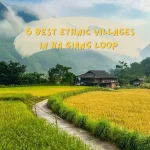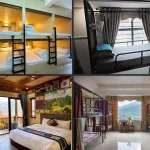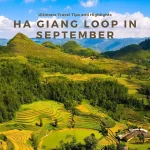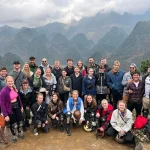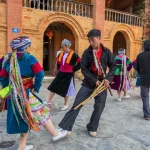The Ha Giang Loop is a spectacular route known for its breathtaking landscapes and rich cultural tapestry. Home to various ethnic communities, this region offers travelers a unique chance to immerse themselves in the traditions and daily lives of local people. Let’s Karst Plateau explore the ethnic diversity of Ha Giang and what makes each group so unique.
1. An Overview of Ha Giang’s Ethnic Diversity
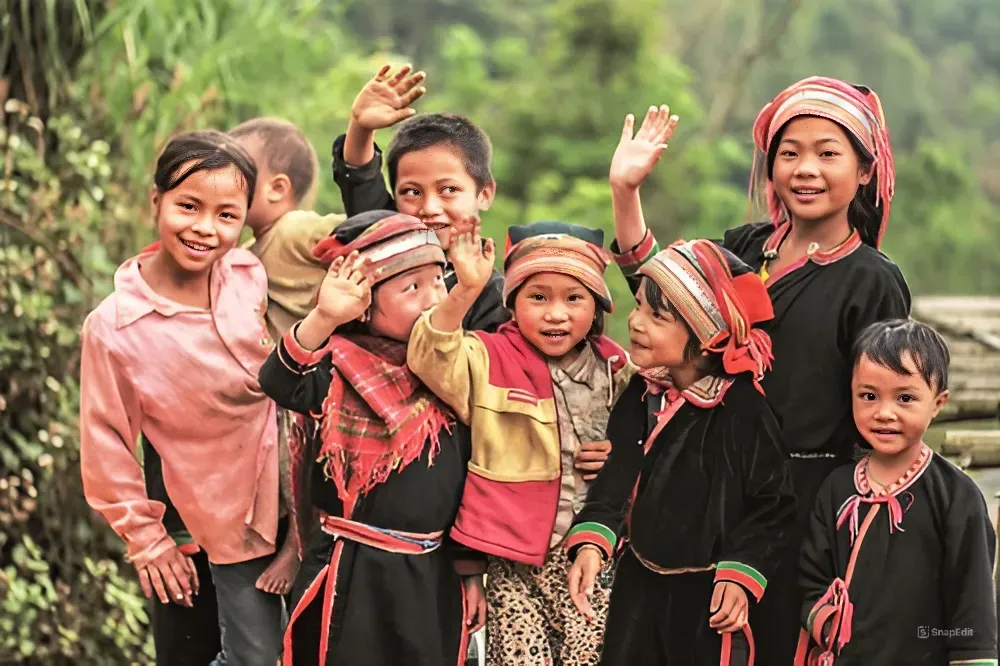
Ha Giang is home to a rich ethnic community, each with its own culture, traditions and lifestyle
Ha Giang, located in northern Vietnam, is a culturally rich region home to a wide variety of ethnic communities. This remote province is inhabited by more than 20 different ethnic groups, each with its own unique language, customs, and way of life. The most prominent among these groups include the Hmong, Tay, Dao, Nung, and Lo Lo. These ethnic communities have coexisted for centuries, preserving their distinctive traditions while living in harmony with the land and each other.
What makes Ha Giang so special is the opportunity to witness this rich cultural mosaic firsthand. As travelers journey through the Ha Giang Loop, they can visit villages where these ethnic groups reside and experience the daily rhythms of their lives. Each community has something unique to offer—from traditional clothing and handicrafts to festivals that celebrate their heritage. Exploring these ethnic communities offers an authentic cultural experience, allowing visitors to connect with local history and traditions while discovering the remarkable diversity that defines the Ha Giang region.
2. The Nung
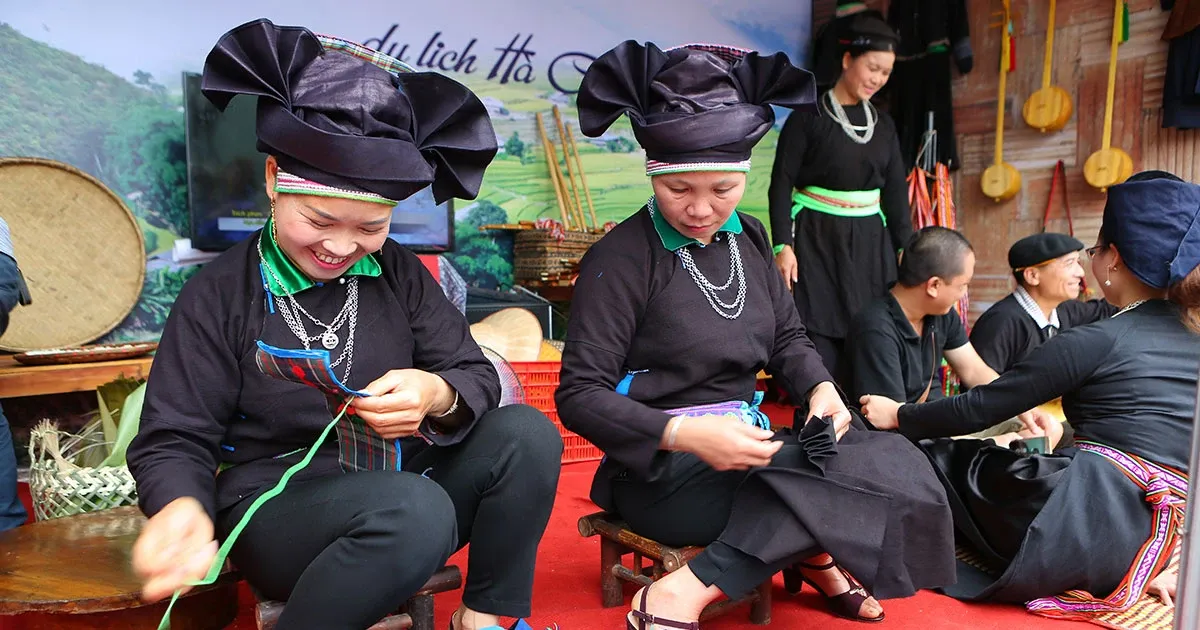
The Nung people, known for their black and indigo clothing
The Nung people are known for their vibrant culture, deeply rooted in agriculture and craftsmanship. Living in the highlands of Ha Giang, they maintain a strong connection to the land through farming and traditional crafts, which are integral to their ethnic communities.
2.1 Experiencing Nung Culture
Visitors to Nung villages can observe traditional crafts in action and even participate in weaving or pottery making. The Nung New Year celebration is a highlight, filled with music, dance, and food. By visiting, travelers can immerse themselves in Nung culture and traditions, adding a memorable cultural experience to their Ha Giang journey.
2.2 Traditions and Crafts
Weaving and pottery are essential aspects of Nung culture. Nung women are skilled weavers who create beautiful textiles, while pottery is also a key craft passed down through generations within their ethnic communities. Their homes, built from wood and bamboo, often feature intricately crafted household items, reflecting the craftsmanship of Nung ethnic communities.
3. The Tay
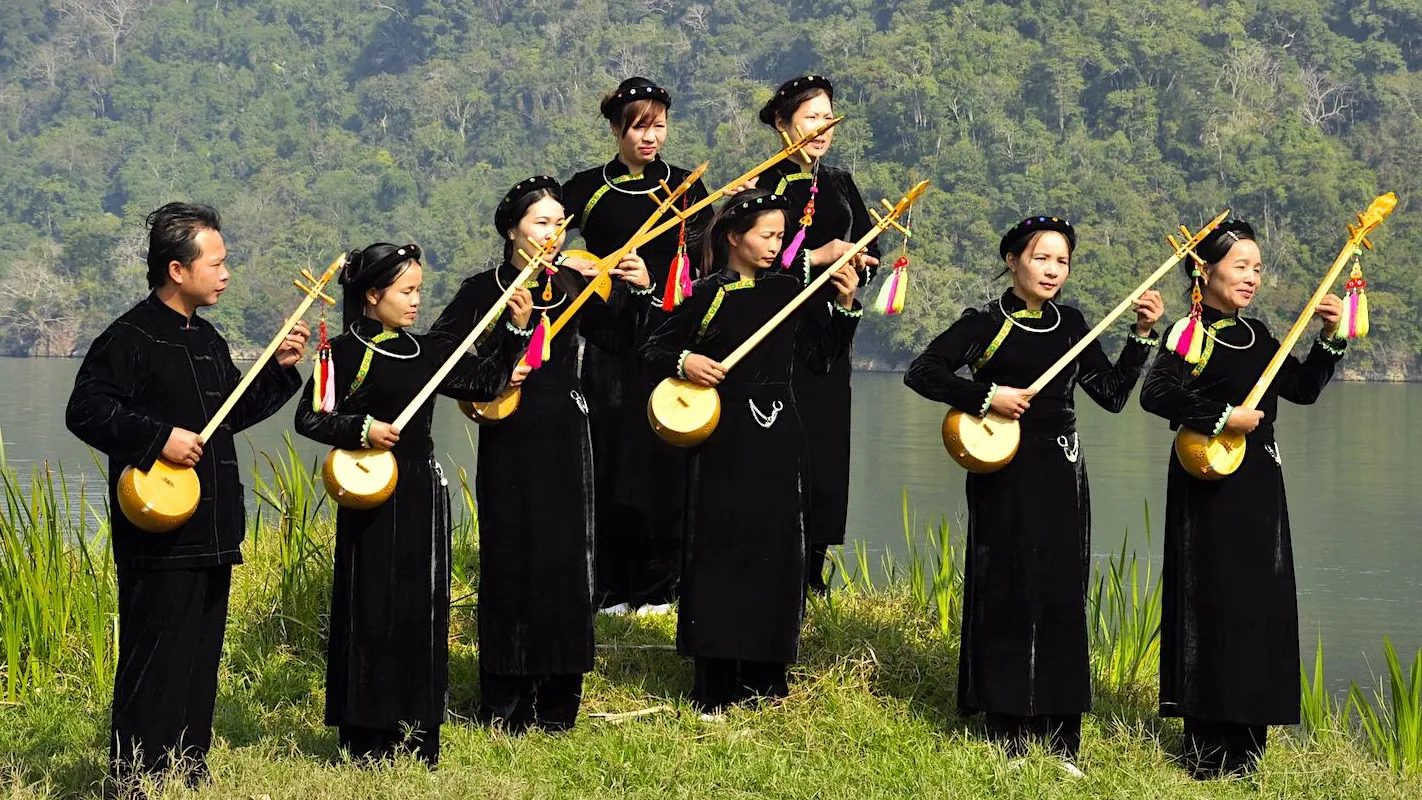
The Tay, the second largest ethnic group in Ha Giang, live mainly in the lowlands along rivers and valleys
The Tay people primarily reside in the lowland valleys and along the rivers, forming one of the oldest and most significant ethnic communities in Vietnam. With a population spread across the northern regions, the Tay have preserved their ancient customs and traditions over the centuries, making them an essential part of Ha Giang’s cultural heritage. Their close connection to nature and agriculture shapes their way of life, with farming being central to their daily activities.
3.1. Stilt Houses and Architecture
Tay villages are instantly recognizable by their iconic stilt houses, built from bamboo and wood. These elevated homes, designed to withstand both seasonal flooding and harsh weather conditions, reflect the Tay’s harmonious relationship with their environment. The houses are typically constructed in scenic areas near rivers or fields, blending seamlessly with the surrounding landscape. Inside, these homes are spacious and well-ventilated, offering a practical yet elegant design that has been used for generations.
The stilt houses are not only functional but also represent the Tay people’s deep-rooted connection to their natural surroundings. This traditional architecture is a significant part of the Tay’s identity and serves as a symbol of their resilience and adaptability.
3.2. Festivals and Traditions

Long Tong Festival is held in early spring, this festival is a celebration of the new agricultural season
The Tay ethnic community celebrates several festivals throughout the year, many of which are closely tied to agriculture and spiritual beliefs. One of the most important is the Long Tong Festival, also known as the “Field-Going Festival,” which is held to pray for a prosperous harvest and good fortune. During this festival, Tay villagers gather to make offerings to the gods, followed by lively performances of traditional music and dance.
These festivals are more than just cultural events; they are a way for the Tay people to connect with their ancestors and the spirits of the land. Visitors attending these celebrations can witness the Tay’s deep spiritual traditions and enjoy the vibrant atmosphere of community gatherings.
3.3. Exploring Tay Villages
Visiting to Tay villages such as those in Quang Ba and Yen Minh offers a peaceful escape into rural life, providing a firsthand experience of one of Vietnam’s most enduring ethnic communities. Visitors can learn about the Tay’s traditional farming methods, which include cultivating rice in terraced fields and fishing in nearby rivers. The Tay are known for their hospitality, often welcoming travelers to stay in homestays, where they can enjoy local dishes made from fresh ingredients grown right in the village.
4. The Hmong
The Hmong people, one of the largest ethnic communities in Ha Giang, are renowned for their vibrant culture and industrious nature. Their rich traditions and strong community ties make them a prominent feature of the Ha Giang Loop, offering travelers a unique insight into their way of life.
4.1 Traditional Clothing and Festivals
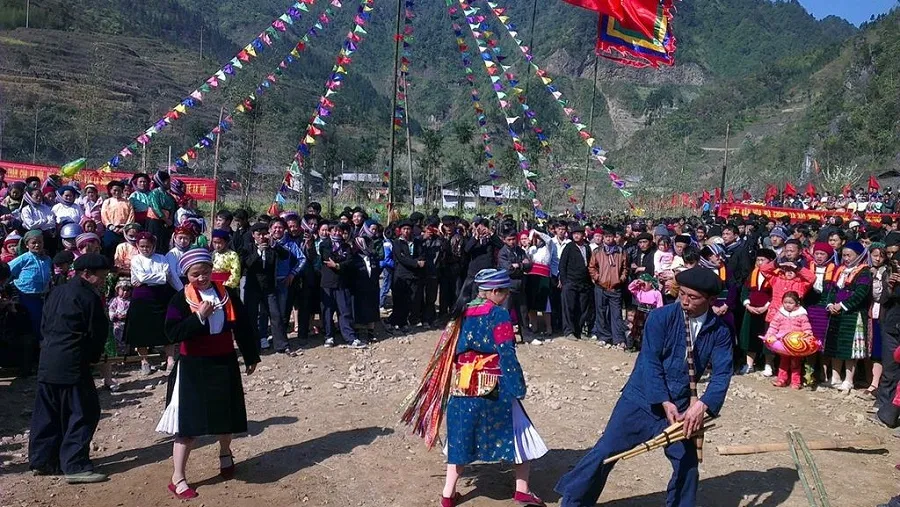
Gau Tao Festival in Ha Giang is held from the 3rd to the 6th of the first lunar month every year
Hmong clothing is a striking example of their artistic heritage, featuring brightly colored fabrics and intricate embroidery. Each pattern and design carries historical and cultural significance, often reflecting the wearer’s family history and social status.
One of the most notable celebrations is the Gau Tao Festival, a lively event held to honor their ancestors and celebrate the new year. This festival is marked by traditional music, dance performances, and games, offering visitors a chance to experience the Hmong ethnic communities’ deep cultural roots and communal spirit.
4.2 Craftsmanship and Handicrafts
The Hmong are exceptionally skilled artisans, known for their elaborate handicrafts. Their handmade textiles, including embroidered garments and tapestries, showcase complex designs and vibrant colors. In addition to textiles, the Hmong craft intricate silver jewelry and practical wooden tools. These handcrafted items are often sold at local markets, where visitors can purchase unique souvenirs that reflect the rich craftsmanship and artistic traditions of Hmong ethnic communities.
4.3 Visiting Hmong Villages
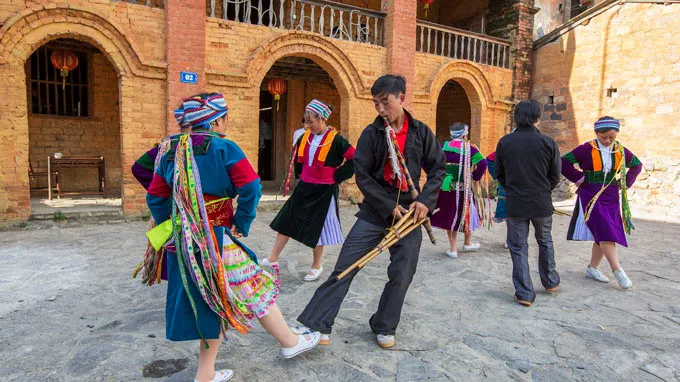
The warm hospitality of the Hmong people is evident in their interactions with visitors
Hmong villages are typically located in the high-altitude areas of the Ha Giang Loop like Dong Van and Meo Vac, nestled amidst stunning mountain scenery. Visiting these villages provides travelers with an opportunity to witness the Hmong’s agricultural practices, which include cultivating terraced rice fields and raising livestock. The warm hospitality of the Hmong people is evident in their interactions with visitors, who are often welcomed to stay in homestays. This immersive experience allows travelers to gain a deeper understanding of Hmong daily life and traditions, enriching their journey through this culturally diverse region.
5. The Dao
The Dao people, with their distinct cultural practices and vibrant attire, are a significant part of Ha Giang’s ethnic communities. Divided into subgroups such as the Red Dao and Black Dao, they each bring unique traditions and spiritual practices to the region, enriching the cultural landscape of the Ha Giang Loop.
5.1 Red Dao and Black Dao
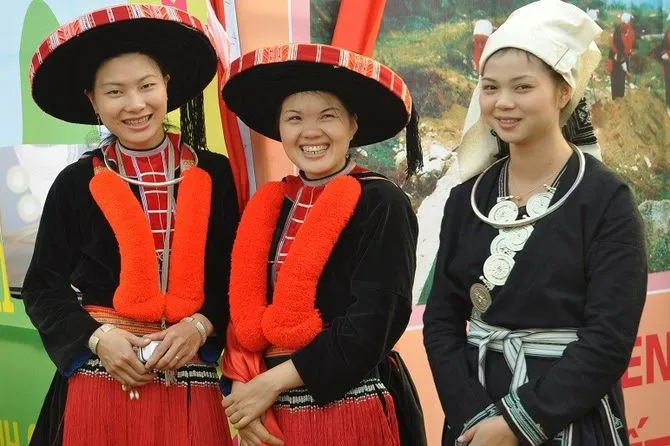
Red Dao women wear bright red headscarves and elaborately embroidered clothing, while Black Dao have darker, simpler costumes
The Red Dao are easily recognized by their bright red scarves and elaborate silver jewelry, which are integral to their cultural identity. Their clothing is not just decorative but also signifies social status and community ties.
In contrast, the Black Dao are known for their darker attire, often adorned with intricate embroidery. Despite their differences, both groups maintain strong cultural identities and continue to practice their traditional customs, preserving their rich heritage through generations.
5.2 Herbal Medicine
Herbal medicine plays a crucial role in Dao life, with the use of herbal baths being a notable tradition for healing and relaxation. These baths, made from a variety of locally sourced herbs, are believed to have therapeutic benefits. Visitors can explore Dao villages to learn about these ancient practices and even participate in a herbal bath, a therapeutic experience that showcases the Dao’s deep understanding of nature’s healing properties.
5.3 Festivals and Ceremonies
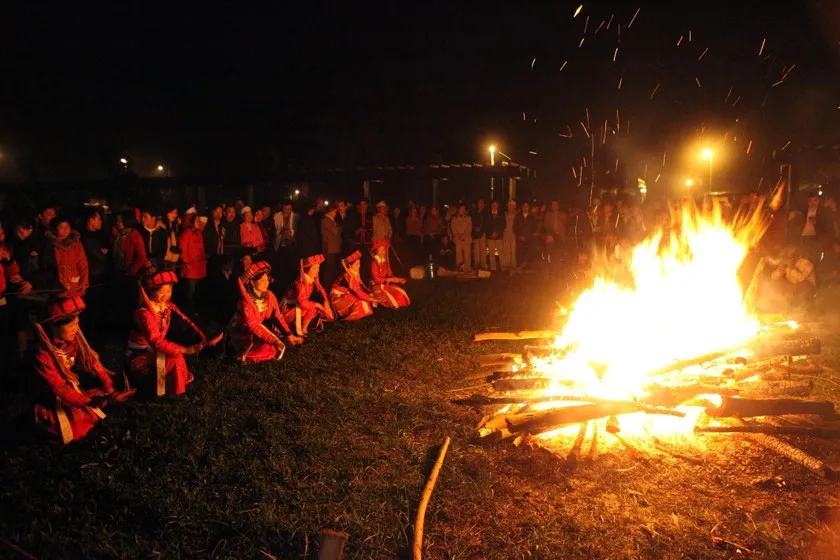
The festival is held during the Lunar New Year and includes a ritual dance around a bonfire
Dao festivals are spectacular displays of their cultural and spiritual heritage. One such event is the Fire Dance Festival, where villagers perform traditional dances around a bonfire to connect with their spiritual ancestors and celebrate their cultural traditions. These festivals offer an immersive experience into Dao customs, showcasing the vibrant community spirit and spiritual practices of Dao ethnic communities. The rich traditions and community activities provide a deep insight into the unique aspects of these ethnic communities.
5.4 Discovering Dao Villages
Dao villages such as those in Hoang Su Phi provide travelers with a unique opportunity to engage with these ethnic communities. Visiting these villages allows for an in-depth exploration of Dao customs, from observing the preparation of herbal medicines to participating in traditional rituals. Travelers can experience firsthand the hospitality of the Dao people and gain insight into their everyday lives and cultural practices.
6. The Lo Lo
The Lo Lo people, a smaller but culturally rich ethnic community in Ha Giang, offer a fascinating glimpse into ancient traditions and customs. Despite their smaller population, the Lo Lo have preserved their unique way of life, making them a notable highlight for those interested in exploring diverse ethnic communities.
6.1. Traditional Clothing and Jewelry
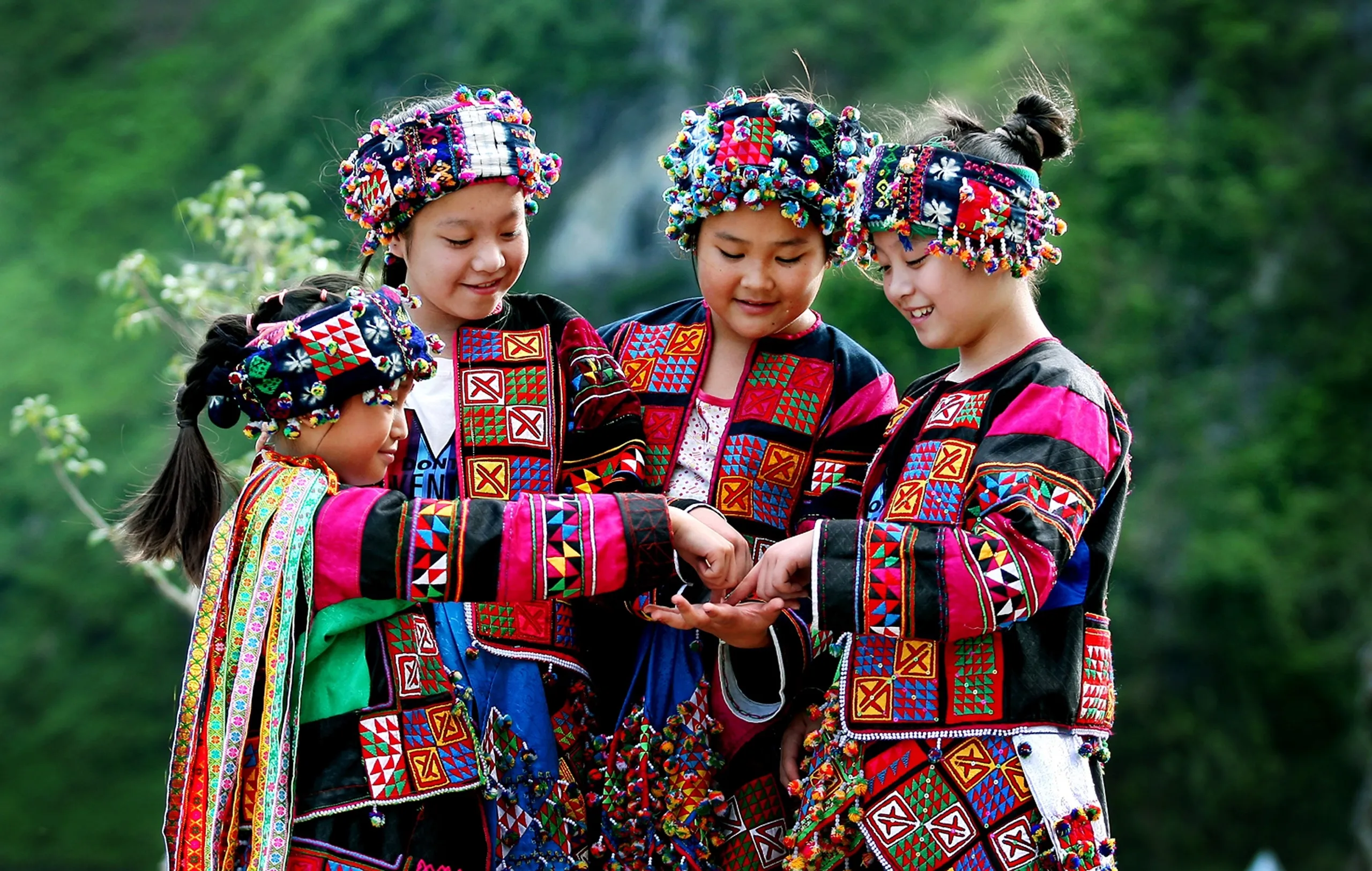
The Lo Lo people are famous for their colorful traditional costumes, with intricate patterns and bright colors
The Lo Lo are renowned for their distinctive black clothing, which stands out with its vibrant patterns and silver jewelry. Their garments are often adorned with intricate embroidery and symbols that hold deep spiritual significance. Each piece of clothing not only serves as a statement of identity but also reflects the Lo Lo’s profound connection to their cultural and spiritual heritage within their ethnic communities. The silver jewelry, in particular, is a symbol of wealth and status within the Lo Lo community, often worn during special ceremonies and festivals.
6.2. Cultural Performances and Festivals
Lo Lo festivals are vibrant celebrations showcasing their rich cultural heritage. Among the most significant are the Long Tong Festival and the New Rice Festival, which are central to the traditions of Lo Lo ethnic communities.
- Long Tong Festival: Also known as the “Field-Going Festival,” this event is held to celebrate the new year and pray for a successful harvest. The festival is marked by traditional dances, songs, and rituals that highlight the Lo Lo’s deep spiritual beliefs and agricultural roots.
- New Rice Festival: This festival is a major celebration marking the end of the rice harvest season. It involves various traditional performances, including dance and music, as well as rituals to give thanks to the gods for a bountiful harvest. This festival is a time for the community to come together, enjoy festive foods, and celebrate their agricultural achievements.
6.3. Experiencing Lo Lo Culture
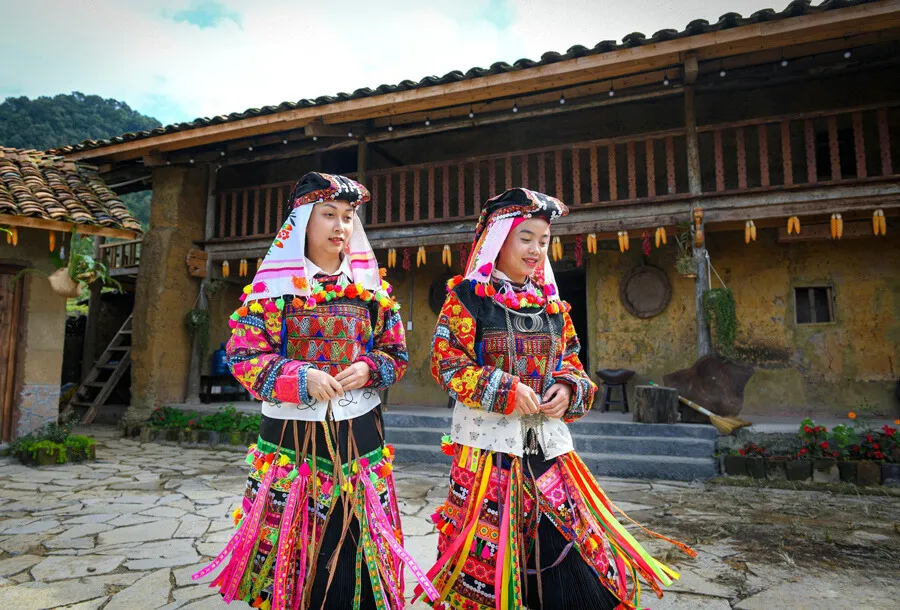
Tourists can visit Lo Lo villages to experience the simplicity and warmth of their lifestyle
To fully immerse yourself in Lo Lo culture, visiting Lo Lo Chai Village is a must. This village located in Lung Cu commune, Dong Van district, Ha Giang province. It nestled in the stunning landscape of Ha Giang, provides an authentic experience of Lo Lo life. Here, you can observe traditional practices, from the preparation of their distinctive clothing and jewelry to the performance of cultural rituals.
In Lo Lo Chai Village, travelers can interact with local families, learn about their daily routines, and gain insights into their rich cultural heritage. The village offers an opportunity to witness traditional festivals and ceremonies in their genuine setting, adding a profound layer to your journey through Ha Giang. Engaging with the Lo Lo ethnic communities in such a setting enriches your understanding of their vibrant traditions and the deep cultural roots they maintain.
Exploring the Lo Lo ethnic communities offers travelers a chance to appreciate the rich diversity of Ha Giang and connect with a group that has successfully preserved its ancient customs and rituals. This cultural immersion provides a deeper understanding of the region’s unique traditions and the enduring legacy of its smaller ethnic communities.
7. Tips for Visiting Ethnic Communities

Visiting the unique ethnic communities along the Ha Giang Loop offers an enriching cultural experience. To ensure a respectful and immersive visit, here are some essential tips:
- Respect Local Customs: Each ethnic community along the Ha Giang Loop has its own distinct set of customs and traditions. It’s crucial to be mindful of local etiquette and cultural norms. This includes dressing modestly, asking for permission before taking photos, and participating respectfully in local ceremonies or rituals. By showing respect for their customs, you’ll foster positive interactions and gain deeper insights into their way of life.
- Learn Basic Phrases: Understanding a few basic phrases in Vietnamese or the local dialect can significantly enhance your interactions with the ethnic communities. Simple greetings or polite expressions can go a long way in breaking the ice and showing your interest in their culture. Many locals appreciate the effort and it can lead to more meaningful conversations and connections.
- Engage with the Community: To truly appreciate the richness of each ethnic community, actively engage in their daily activities and local festivals. Participating in traditional practices, such as weaving with the Giay or attending a H’mong festival, allows you to experience their culture firsthand. Engaging with community members, whether through shared meals, craft workshops, or storytelling sessions, will provide you with a more authentic understanding of their heritage.
- Support Local Crafts and Products: Many ethnic communities have unique crafts and products that reflect their cultural heritage. Purchasing handmade items from local markets not only supports the community economically but also helps preserve their traditional crafts. Be sure to buy directly from the artisans to ensure they receive fair compensation.
By following these tips, you’ll not only gain a richer understanding of the ethnic communities of the Ha Giang Loop but also contribute positively to their preservation and appreciation. Enjoy your cultural adventure and make lasting memories in this captivating region of Northern Vietnam.
The Ha Giang Loop offers more than just scenic beauty; it provides a rare opportunity to experience the unique ethnic communities that call this region home. From the colorful clothing of the Hmong to the spiritual ceremonies of the Dao, every group has its own story to tell. To make the most of your cultural journey through Ha Giang, visit Karst Plateau for more travel tips and insights.



